#national wildlife
Explore tagged Tumblr posts
Text
#wild life#animals#cat#brazilian fauna#exotic animals from brazil#brazil animal illustrations#brazilian tropical animals#brazilian wildlife art#animal native to brazil#amazon fauna#animals from brazil#national wildlife#of animals from the atlantic forest#puppy#feline#amazon#jungle#animal#bird#nature#monkey#parrot#wild#wild animals#forest#amazonia#turquoise fronted amazon#blue fronted amazon#bird portrait painting#realistic parrot painting
2 notes
·
View notes
Text
20K notes
·
View notes
Text
"For years, California was slated to undertake the world’s largest dam removal project in order to free the Klamath River to flow as it had done for thousands of years.
Now, as the project nears completion, imagery is percolating out of Klamath showing the waterway’s dramatic transformation, and they are breathtaking to behold.
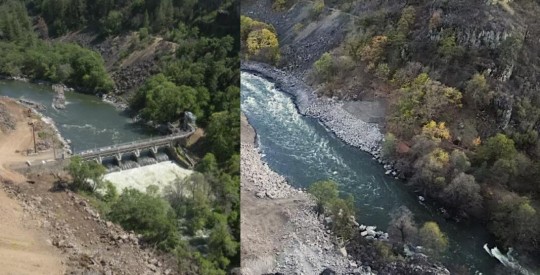
Pictured: Klamath River flows freely, after Copco-2 dam was removed in California.
Incredibly, the project has been nearly completed on schedule and under budget, and recently concluded with the removal of two dams, Iron Gate and Copco 1. Small “cofferdams” which helped divert water for the main dams’ construction, still need to be removed.
The river, along which salmon and trout had migrated and bred for centuries, can flow freely between Lake Ewauna in Klamath Falls, Oregon, to the Pacific Ocean for the first time since the dams were constructed between 1903 and 1962.
“This is a monumental achievement—not just for the Klamath River but for our entire state, nation, and planet,” Governor Gavin Newsom said in a statement. “By taking down these outdated dams, we are giving salmon and other species a chance to thrive once again, while also restoring an essential lifeline for tribal communities who have long depended on the health of the river.”
“We had a really incredible moment to share with tribes as we watched the final cofferdams be broken,” Ren Brownell, Klamath River Renewal Corp. public information officer, told SFGATE. “So we’ve officially returned the river to its historic channel at all the dam sites. But the work continues.”
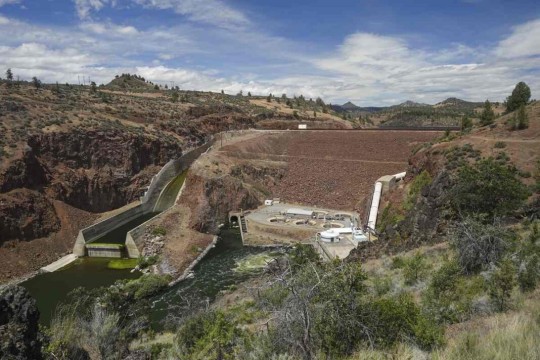
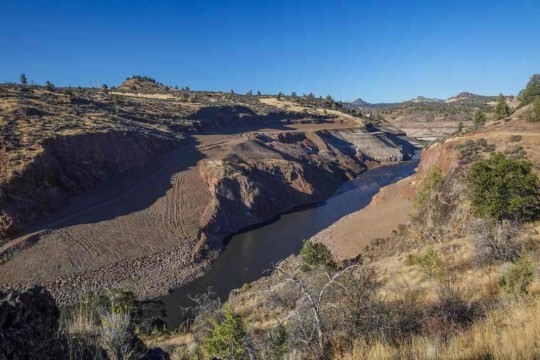
Pictured: Iron Gate Dam, before and after.
“The dams that have divided the basin are now gone and the river is free,” Frankie Myers, vice chairman of the Yurok Tribe, said in a tribal news release from late August. “Our sacred duty to our children, our ancestors, and for ourselves, is to take care of the river, and today’s events represent a fulfillment of that obligation.”
The Yurok Tribe has lived along the Klamath River forever, and it was they who led the decades-long campaign to dismantle the dams.
At first the water was turbid, brown, murky, and filled with dead algae—discharges from riverside sediment deposits and reservoir drainage. However, Brownell said the water quality will improve over a short time span as the river normalizes.
“I think in September, we may have some Chinook salmon and steelhead moseying upstream and checking things out for the first time in over 60 years,” said Bob Pagliuco, a marine habitat resource specialist at the National Oceanic and Atmospheric Administration in July.


Pictured: JC Boyle Dam, before and after.
“Based on what I’ve seen and what I know these fish can do, I think they will start occupying these habitats immediately. There won’t be any great numbers at first, but within several generations—10 to 15 years—new populations will be established.”
Ironically, a news release from the NOAA states that the simplification of the Klamath River by way of the dams actually made it harder for salmon and steelhead to survive and adapt to climate change.
“When you simplify the habitat as we did with the dams, salmon can’t express the full range of their life-history diversity,” said NOAA Research Fisheries Biologist Tommy Williams.
“The Klamath watershed is very prone to disturbance. The environment throughout the historical range of Pacific salmon and steelhead is very dynamic. We have fires, floods, earthquakes, you name it. These fish not only deal with it well, it’s required for their survival by allowing the expression of the full range of their diversity. It challenges them. Through this, they develop this capacity to deal with environmental changes.”
-via Good News Network, October 9, 2024
#california#oregon#klamath river#dam#dam removal#yurok#first nations#indigenous activism#rivers#wildlife#biodiversity#salmon#rewilding#nature photography#ecosystems#good news#hope
6K notes
·
View notes
Text

The Lookout
I made it up to Coyote Creek the other day. I didn’t see much except some camp robbers and this chipmunk.
Nikon D500, Manual Mode, Tamron 150-600mm VC G2, F/6.3, ISO Auto (500), ET 1/640, Focal Length 600mm, Handheld, Vibration Control on
#chipmunk#squirrel#pine#tree#green#wildlife#nature#beaverhead#beaverhead-deerlodge national forest#photography#photos of southwest montana#dillon#brad christensen#montana#photographer#fall#autumn
2K notes
·
View notes
Text
One of my absolute favorite art/science collaborations in the world is a project by National Geographic and photographer Joel Sartore called the Photo Ark. The ark is a 25 year project with the goal of photographing every animal species in human care, with the hopes of saving as many endangered species as possible. The Ark turned 18 years old today and they’ve just photographed their 16,000th animal- the Santa Cruz long-toed salamander!

I really recommend any animal lovers or photography enthusiasts learn about this project and follow photographer Joel Sartore on this journey. He does an incredible job of highlighting lesser known species and his skill as an artist is staggering. The behind the scenes process of how he gets these shots of such a wide variety of species is always a technical marvel.

Also worth noting that if you’re an artist ever in need of reference photos for an obscure animal species, this is a great resource where you can look up high quality images by species name! Anyone looking to decorate their home with a focus on biology art can purchase beautiful animal prints while supporting conservation.
Here are some of my favorite shots over the years to celebrate the Ark’s birthday!








#I want this dudes job but my photography will never be on this level 🤯#animals#Photo ark#Joel Sartore#photography#wildlife photography#art#National Geographic
2K notes
·
View notes
Text
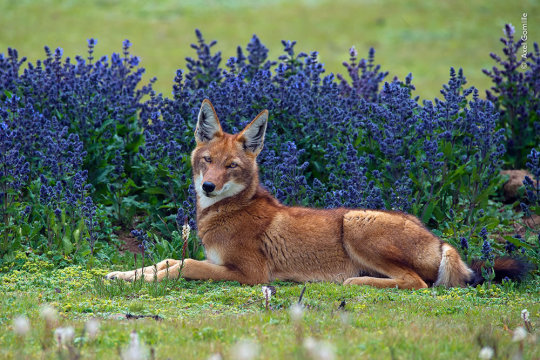
A Rare Sight
An Ethiopian wolf sits among purple flowers in Ethiopia’s Bale Mountains National Park.
by Axel Gomille
Wildlife Photographer of the Year People’s Choice Award
#axel gomille#photographer#ethiopian fox#fox#animal#mammal#wildlife#wildlife photographer of the year people's choice award#nature#bale mountains national park#ethiopia
4K notes
·
View notes
Text

Katmai, Alaska
acacia.johnson
#katmai national park#bears#brown bears#nature preserve#wildlife#ethical wildlife photography#nature#mountains#curators on tumblr
1K notes
·
View notes
Text


Petit Manan Lighthouse, Petit Manan Island, Steuben. Possibly my favorite lighthouse. In the summer, this island is home to hundreds of birds. Including Atlantic puffins, arctic, common and roseate terns, as well as black guillemots and many more. Decided I couldn't draw them all, but here's a couple attempts to try and capture the island's vibes. Can you spot the oystercatchers? MERCH
#Petit Manan#Petit Manan Island#Petit Manan Light#Petit Manan Lighthouse#Steuben#Maine#Lighthouse#light#island#Maine island#art#illustration#design#sticker#National Wildlife Refuge#Maine Coastal Islands National Wildlife Refuge#Maine Coastal Islands#breeding colony#terns#tern colony#puffin#Atlantic puffin#black guillemot#sea birds#sea bird#arctic tern#flying#in flight#bird#birds
2K notes
·
View notes
Text





August in Rocky Mountain Arsenal National Wildlife Refuge. Commerce City, Colorado. Photos by Amber Maitrejean
#photographers on tumblr#nature#landscape#birds#swainson's hawk#birds flying#flying insects#commerce city colorado#rocky mountain arsenal national wildlife refuge
1K notes
·
View notes
Text

Grazing
#artists on tumblr#original photographers#original photography#hiking#pacific northwest#nature#nikon#washington#pnw#orofeaiel#deer#grazing#wildlife#animals#four legged friends#forest#trees#dark#olympic national park
1K notes
·
View notes
Text
If you're a bison, an elk, or a bighorn sheep, you can't just walk into any grocery store and take home bags of food to stash away in a pantry. While some wild animals do cache surpluses of food, feast-or-famine patterns are quite common even in areas of great biodiversity and food availability, particularly as seasonal foods may wax or wane. And if there are other species that eat similar foods to what you prefer, there will be competition.
Or will there? Yellowstone National Park is full of herbivores chowing down on the abundant plant life there. But they aren't all going after the exact same plants all at the same time. This study demonstrates that each species inhabits a unique food-related niche, and the parameters of that niche may shift as the seasons change.
Summer, for example, sees a lot more crossover in terms of what the large herbivorous ungulates eat, simply because there's plenty to go around. But in winter, when food is more scarce, each species becomes more of a specialist. Deer tend to eat more woody vegetation (in fact, their digestive systems adjust seasonally), and mostly stick to one area. Bison, which are larger and more powerful, can forge paths through the deep snow to find dried plants other animals can't access.
It makes sense that wildlife would exploit food sources differently according to species and season, but it's neat to see a study giving a more quantitative look at that behavior. Not everything in nature is about competition; sometimes it's about carving out one's own specialized niche that, incidentally, leaves enough room for others to do the same, and then coexisting together even through the hard times. We could learn a lot from our wild neighbors.
#wildlife#Yellowstone#Yellowstone National Park#ungulates#herbivores#animals#wild animals#nature#ecology#ecological niche#science#scicomm#North America
778 notes
·
View notes
Text
48K notes
·
View notes
Text
"For over a decade, the Yosemite toad has been recognized as a federally threatened species, after experiencing a 50% population decline during the Rim Fire of 2013.
The wildfire, which encompassed a mass of land near Yosemite National Park, made the amphibian species especially vulnerable in its home habitat.
Native to the Sierra Nevada, the toads play a key role in the area’s ecosystem — and conservationists stepped in to secure their future.
In 2017, the San Francisco Zoo’s conservation team began working with the National Park Service, Yosemite Conservancy, U.S. Fish & Wildlife Service, California Department of Fish & Wildlife, and the U.S. Geological Survey.
The goal of all of these stakeholders? To raise their own Yosemite toads, re-establishing a self-sustaining population in the wild.
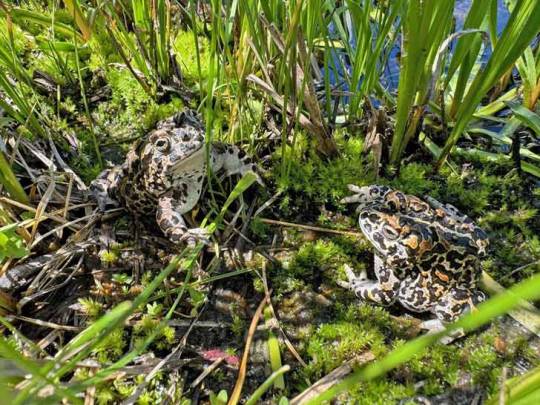
“Over the past several years, SF Zoo’s conservation team has been busily raising hundreds of these small but significant amphibians from tadpole stage, a species found only in the Sierra Nevada, for the purpose of reintroducing them to an area of Yosemite National Park where it was last seen 11 years ago,” the zoo shared on social media.
By 2022, a group of toads were deemed ready for release — and at the end of June of this year [2024], 118 toads were flown via helicopter back to their habitat.
“It’s the first time anyone has ever raised this species in captivity and released them to the wild,” Rochelle Stiles, field conservation manager at the San Francisco Zoo, told SFGATE. “It’s just incredible. It makes what we do at the zoo every day worthwhile.”
Over the past two years, these toads were fed a diet of crickets and vitamin supplements and were examined individually to ensure they were ready for wildlife release.
Zoo team members inserted a microchip into each toad to identify and monitor its health. In addition, 30 of the toads were equipped with radio transmitters, allowing their movements to be tracked using a radio receiver and antenna.
The project doesn’t end with this single wildlife release; it’s slated to take place over the next five years, as conservationists continue to collect data about the toads’ breeding conditions and survivability in an ever-changing climate. They will also continue to raise future toad groups at the zoo’s wellness and conservation center...
While the future of the Yosemite toad is still up in the air — and the uncertainty of climate change makes this a particularly audacious leap of faith — the reintroduction of these amphibians could have positive ripple effects for all of Yosemite.
Their re-entry could restore the population balance of invertebrates and small vertebrates that the toads consume, as well as balance the food web, serving as prey for snakes, birds, and other local predators.
“Zoo-reared toads can restore historic populations,” Nancy Chan, director of communications at the San Francisco Zoo, told SFGATE.
Stiles continued: “This is our backyard, our home, and we want to bring native species back to where they belong.”
-via GoodGoodGood, July 11, 2024
#yosemite#yosemite national park#california#united states#amphibian#frogs and toads#frogblr#frogposting#toadblr#toad#endangered species#wild animals#biodiversity#wildlife conservation#wildlife#good news#hope
1K notes
·
View notes
Text

Congrats to 128 Grazer for being the rolly-polyiest of bears! Enjoy your friday. Photo via National Park Service/F. Jimenez
#bears#friday#friday bear#bear#grizzly#brown bear#fat bear week#fat bear#cute#animals#nature#wildlife#wildness#katmai bears#katmai national park
922 notes
·
View notes
Text


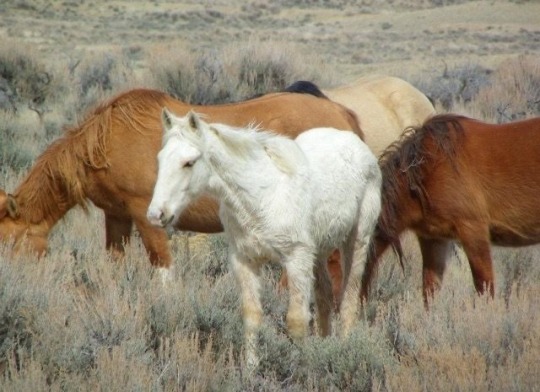


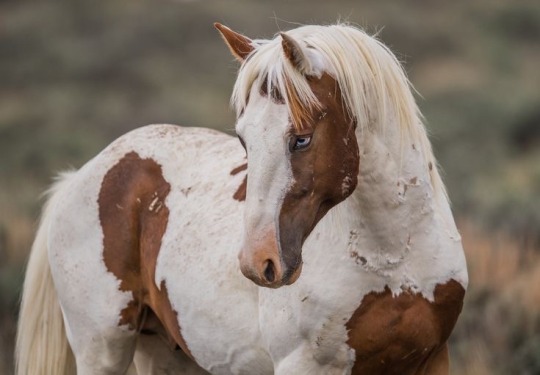
sand wash basin mustangs 🦂
#wild mustangs#mustang horse#horse photography#colorado#wild horses#wild animals#wildlife#equestrian#equidae#equine#equines#horse#horse posting#horseblr#horses#horse blog#equestrian blog#sso#star stable online#star stable tumblr#western#rocky mountains#great plains#national park#western america#rdr2#stallions#spirit stallion of the cimarron
603 notes
·
View notes
Text





An ode to sunset
Sometimes I have to break my own arbitrary rules.
#photo of the day#photo set#photography#postcard worthy#breathtaking#sunset#sunset photography#dusk#moon#waxing crescent moon#moon photography#Venus#landscape#landscape photography#nature photography#nikon photography#nikon coolpix p1000#Edwin B Forsythe National Wildlife Refuge#Galloway NJ#nj isnt boring#fall 2024
937 notes
·
View notes